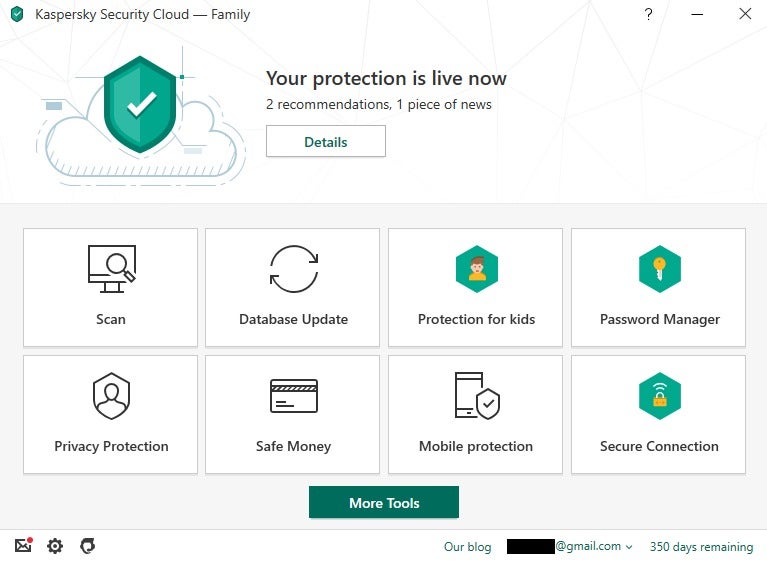

- KASPERSKY MY ACCOUNT INSTALL
- KASPERSKY MY ACCOUNT MANUAL
- KASPERSKY MY ACCOUNT PC
- KASPERSKY MY ACCOUNT FREE
The app also displays advice on what to do if your data has been leaked. If your account data is possibly leaked, the app displays a list of websites from which a data leak could have occurred, the date of possible leakage, and the category of data that may be compromised.
KASPERSKY MY ACCOUNT FREE
If you need a flat file scanner to check archived data/drives, I would recommend using one of the many available free AV scanners such as Kaspersky's Virus Removal Tool, ESET's Free Virus Scan, or even the built in Windows Defender that ships with Windows 8/8.1 and Windows 10. Additionally, whenever a new location is discovered to be used by malware the Malwarebytes Research team adds that location dynamically to the outgoing database updates so the locations that are checked by the default Threat/Quick Scan in Malwarebytes can be changed on the fly by Research without requiring any engine or program version updates/upgrades. The only threat it *might* miss would be a dormant/inactive threat that is not actively running/installed on a secondary drive, however if the threat were executed then Malwarebytes should detect it. This also means that if a threat were active from a non-standard location, because Malwarebytes checks all threads and processes in memory, it should still be detected.
KASPERSKY MY ACCOUNT INSTALL
Malwarebytes is also designed to look in all the locations where malware is known to install itself/hide, so a full or custom scan shouldn't be necessary, especially on any sort of frequent basis (like daily), especially since the default Threat Scan/Quick Scan checks all loading points/startup locations, the registry, all running processes and threads in memory, along with all system folders, program folders and data folders as well as any installed browsers, caches and temp locations. Malwarebytes is not designed to function like normal AV scanners and uses a new kind of scan engine that relies mostly on heuristics detection techniques rather than traditional threat signatures. I don't get it, why wouldn't I want a full drive scan? Makes no sense, KVRT scanned for 14+ hours and had no overheating problem.

Or just figure it out, you are smart kids.īut until the temps during scan drop to a NORMAL levels, I'd never use your product again to avoid hardware damage! I suggest: Malwarebytes monitoring temps of the system, specially HDD and SSD temps and lowering it's scanning force to prevent overheat. Because of the previous usage / scans, the heat probably damaged the battery already, adding to another problem. Note: This is an extremely bad situation, where the battery is right next to the M.2 SSD. Here a random pic from the net of such laptop so you get the idea: Bottom Right is where my left hand stands when flipped, the place for the M.2 SSDīut the problem is also with Malwarebytes, because no other game, software, like say Kaspersky KVRT scan will ever go above 55☌ (The Person responsible for the laptop design placed the SSD AWAY from ANY COOLING! Yes, HP engineers must rip their diplomas apart) That was felt with my hand when placed on the left side of the touch pad, where the SSD is!
KASPERSKY MY ACCOUNT MANUAL
It was a normal manual scan, nothing different! Generic PnP Monitor UHD Graphics 620 (HP)ġ907GB SPCC M.2 PCIe SSD (Silicone Power NVME Gen3 Drive Model: SPCC M.2 PCIe SSD Drive 2TB)Ħhour scan started with 40☌ , which is the idle temp and quickly rose to 70☌, which is the max intended for the SSD and even jumped to 74☌
KASPERSKY MY ACCOUNT PC
Hello, I've scanned my laptop: HP 250 G7 Notebook PC


 0 kommentar(er)
0 kommentar(er)
